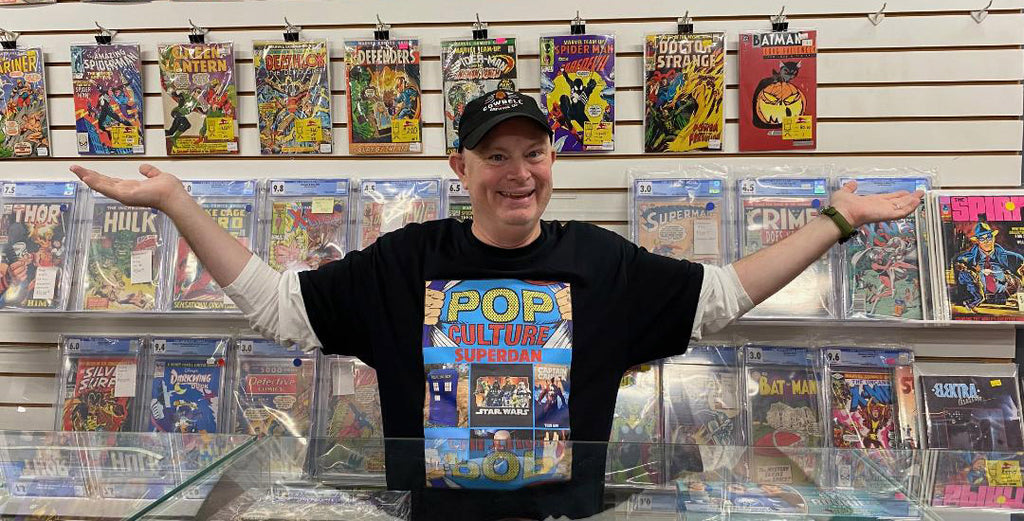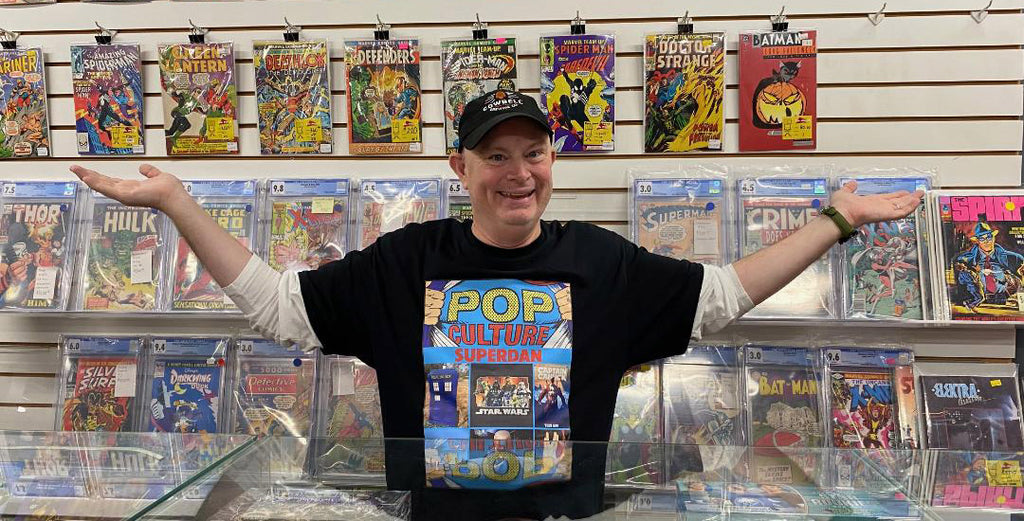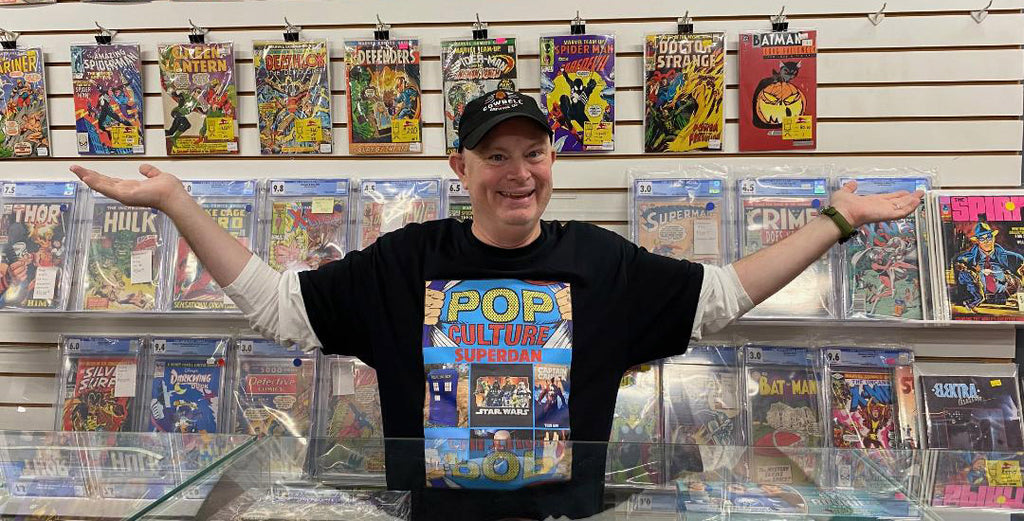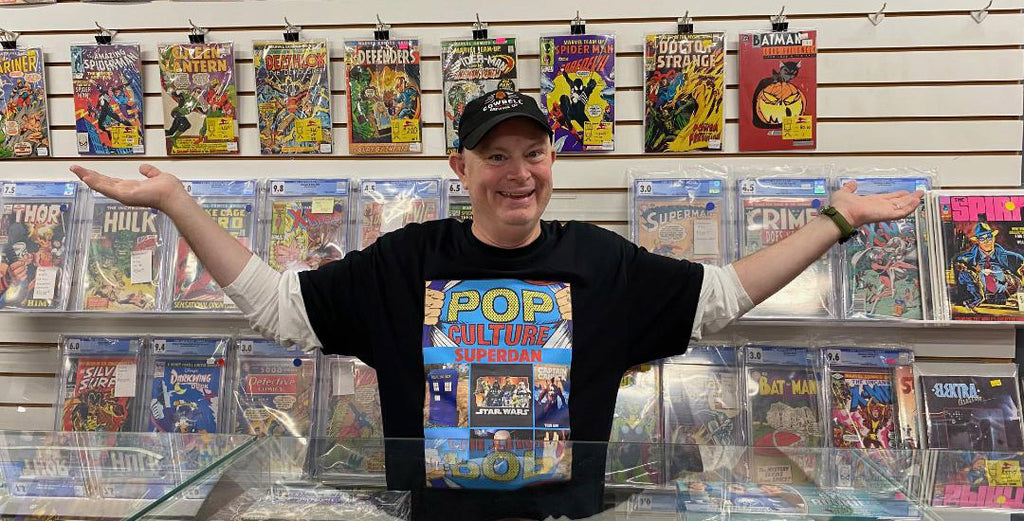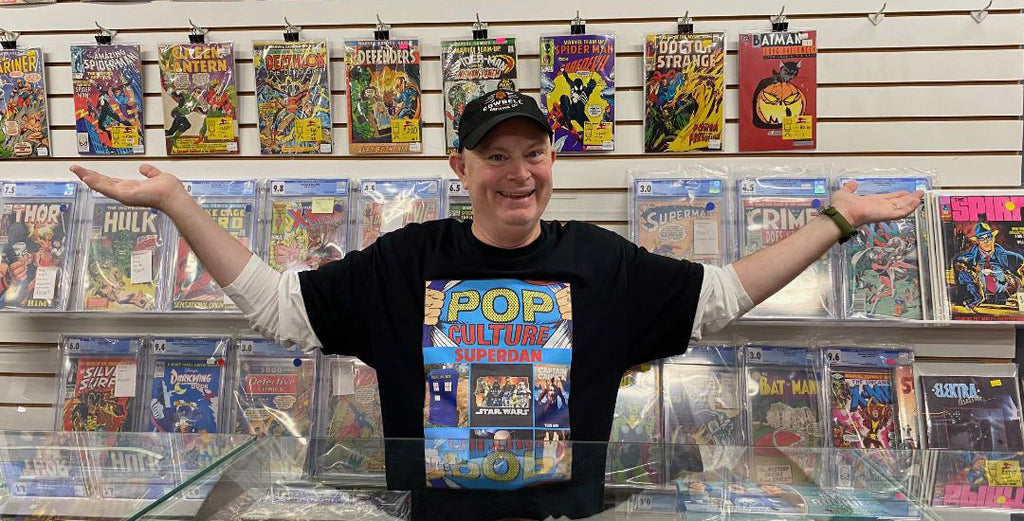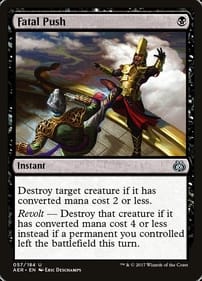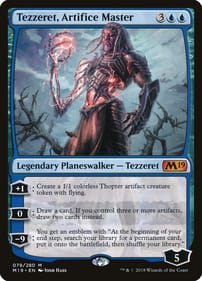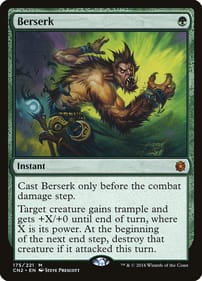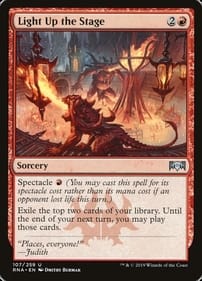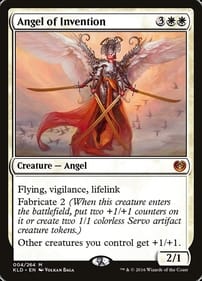Are New Stamps a Sign We’ve Reached Peak Graphic Novel?
By Dan Brown It’s an honour few receive and fewer deserve. It’s not something young Canadians aspire to, but it’s arguably more prestigious than getting a spot on Canada’s Walk of Fame, having your name on the Stanley Cup, or joining the Order of Canada. It’s reserved for those special individuals who have had a deep impact on this dominion we call home. It’s the literal stamp of approval. And now the literary medium you and I love – graphic novels — has it. That’s right: Last month, Canada Post – the folks who deliver the mail – dedicated a series of postage stamps to Canada’s graphic novelists. Chosen for the honour were Chester Brown, Michel Rabagliati, Seth, and the Tamaki cousins, Jillian and Mariko (these creators also contributed the designs that were used). “All of (them) have made significant contributions to the genre and continue a long line of Canadian storytellers honoured by Canada Post,” the Crown Corporation said in a statement about the four adhesive tokens. Those names were selected for their influence on graphic novels as an art form. It became clear a long time ago the Great White North produces more than its share of brilliant graphic novelists. I would liken their dominance in the field to how Canadians are overrepresented in the world of comedy. “The five novelists honoured on the new stamps pushed the boundaries and elevated the form, leaving a mark on readers around the globe,” Canada Post added. I’m sure we could all find reasons to quibble with Canada Post’s selections. I realize it’s still early days, but doesn’t Kate Beaton merit a stamp? And I gotta stand up for Southwestern Ontario’s own Jeff Lemire. He should get one as well.Other possibilities include Guy Delisle, Joe Ollmann, Bryan Lee O’Malley and Dave Sim. That’s off the top of my head. It’s possible other artists were asked to participate, and declined. Whatever happened, there are clearly enough influential homegrown graphic novelists for similar future stamps. It’s true there have been previous Canada Post issues dedicated to comic characters – such as the superheroes Captain Canuck, Fleur dy Lys and Superman. This is the first time graphic novels have been singled out. “Graphic novels tell rich stories by interweaving words and drawings in comic-book-like panels” is how Canada Post makes the distinction. A far more interesting question to ask is, what does this say about society’s attitude toward comics and graphic novels? Surely despite their origins as cheap reading material for kids, they have now gained mainstream approval as an adult pastime? With its announcement, Canada Post is in essence saying graphic novels are as Canadian as beavers, the flag, hockey, and Donald Sutherland, all featured on past stamps. Could the medium get any more respectable? University courses are taught about graphic novels. Scholars write actual books about comics.. They are included in Canada Reads, and they have been source material for movies and TV shows for decades. My nightmare would be the stamps are a sign graphic novels have peaked. Could Canada Post’s gesture, which was meant as an honour, actually be the kiss of death? Naw. I ain’t worried. After all, rock-and-roll pioneer Elvis Presley had to wait a full 16 years after his death to be honoured by the United States Postal Service with a stamp. And when the USPS offered consumers a choice – did they want a handsome young Elvis on the stamp, or an older, sweaty Elvis in a jumpsuit? – more than a million Americans registered their votes in the pre-internet era early 1990s. Look what’s happened to Elvis since then. He hasn’t faded from the collective memory at all. In fact, there was a major motion picture just two years ago telling his story to an entirely new generation. No one is losing interest. Rather than being an indication graphic novels are on the wane, I choose to believe there are many more Canadian creators who will redefine the medium again and again in the days to come. Oh, and while we’re on this topic, Happy Canada Day! Dan Brown has covered pop culture for more than 31 years as a journalist and also moderates L.A. Mood’s monthly graphic-novel group.
There’s No Predicting What This Summer’s Barbenheimer Could Be
By Dan Brown When I ask “What will this summer’s Barbenheimer be?” I don’t mean just which movie or movies will top the box office. I mean something broader. I mean, “What will capture the public’s attention between now and Labour Day?” What will we look back on as a cultural marker, in the future to come? Just as, when we discuss pop culture, we now talk about “before Barbenheimer” and “after Barbenheimer,” what motion picture, show, comic book or event will get people excited, fire the collective imagination, and inspire funny memes?You may recall the giant fuss. It culminated in the dual release on July 21, 2023 of Barbie and Oppenheimer. The first was a movie about a doll, the second a film about the father of the atomic bomb. These two stories appeared to have nothing in common but a release date, yet the odd combination of cute toy and doomsday weapon somehow caught the collective fancy. I knew both movies were in the pipeline, but until I spotted a friend tweeting about her plans for “Barbenheimer,” the term was unknown to me. Neither flick was on my radar. Maybe you were like me. And yes, I got caught up in the frenzy – as millions of people did. How excited was I? I actually ventured out to a theatre! Because it drew even casual moviegoers, Barbie wound up being the global box-office champ for the year. Oppenheimer claimed the third spot on that list, but got its revenge at the Oscars in March when it won seven prizes, including the award for best picture. Sure, you can write Barbenheimer off by saying it was simply an instance of spontaneous grassroots marketing. But that doesn’t preclude the facts: It was on everyone’s list of things to do, it prompted gazillions of posts on social media, it wormed its way into the zeitgeist, it gave people everywhere something to look forward to and talk about.For other examples from the past, think along the lines of Beatlemania, Woodstock, Star Wars, “Who shot J.R.?” Live Aid, Y2K, the first season of Survivor, Dan Brown’s Da Vinci Code and the Taylor Swift/Travis Kelce romance. So yeah, will this summer have an equivalent cultural eruption? From the vantage point of mid-June, all we can do is guess. Maybe it will be Pixar’s Inside Out sequel, which outperformed expectations on its opening weekend to generate nearly $155 million in domestic ticket sales. One thing we know for sure is this year’s Barbenheimer won’t be Furiosa: A Mad Max Saga, which bombed when it was released in late May. There are other possibilities. The series Baby Reindeer is a Top 10 show for Netflix, and seems to have legs. Even though you may not have seen it, you know it’s popular because the show has already inspired at least one lawsuit. The latest Deadpool sequel, in which he teams up with the presumed dead Wolverine, is set to land in theatres next month. And I’m sure Marvel’s comic division would love for its latest event series, which ties together the entire universe of superheroes in a common struggle, will be on everyone’s pull list. It’s called Blood Hunt and the premise is perpetual night has fallen on the Marvel Universe, allowing the company’s many vampire characters to run riot. Fans of the comic 30 Days of Night – set in Barrow, Alaska – will recall it had a similar setup. There’s also a chance a summer concert or live comedy series might take off, becoming the hot ticket of 2024. Or maybe it will be something from outside the world of pure entertainment.The 2024 Euro Cup is already drawing eyeballs to small screens and soccer fans to public houses. Plus the Olympics are bound to prompt their share of heroic moments – although I could do without Vladimir Putin continuing his habit of invading another country during or just after the Games. If you have any predictions for the Barbenheimer of 2024, I’d love to hear them! Dan Brown has covered pop culture for more than 31 years as a journalist and also moderates L.A. Mood’s monthly graphic-novel group.
Forest City Comicon Celebrates a Decade of Nerdiness
By Dan Brown Where will you be this Sunday? I’ll be at London’s Centennial Hall among the many fans who have helped make Forest City Comicon the long-running local success that it is. Such a smash, in fact, that June 16 marks 10 years since the first edition of FCC was held. In that time, it has seen visits by a hobbit, an X-Man, a Ninja Turtle, a vampire, and both Pinky and the Brain. And I’m just talking about the celebrity guests! The real treat for me is savouring the vibe that’s created when the members of different fandoms come together to share the love they feel for a particular comic, movie, TV show, anime or video game. You might think fitting all those many pop-culture enthusiasts into one place would set off sparks, but it’s the opposite. The atmosphere is peaceful and positive. I really dig it. “What I love about comicons is these are people who are passionate about something,” says Ian Tyson, a host and member of the FCC organizing committee. “That passion makes for a good audience member” at panels, adds Tyson, who – as part of the Just Us League, along with Jeremy Bushell and Brad Bushell – has led panels in the past on topics like debating the merits of Superman movies versus Batman films. Tyson says the assembled fandoms have joined to make a community that has lasted a decade and counting. A highlight for Tyson came in 2017 when he made second breakfast live on stage during a question-and-answer session with Billy Boyd, the actor who played the heroic halfling Pippin in the Lord of the Rings movies. “Our goal starting out was to be an alternative to (Toronto’s) Fan Expo, not to replicate it,” explains organizer Carol Vandenberg. “We hoped to define a London version by focusing on local and more accessible talent.” As far as I can see, mission accomplished. This year features a guest lineup that includes a strong Star Trek presence. Both Sara Mitich and Patrick Kwok-Choon have appeared on the just-concluded Discovery while T.J. Storm is known for his motion-capture performances in such movies as Godzilla: King of the Monsters and Deadpool. “Our goal is to make the biggest one-day show we can, bursting with activities, local talent, emerging celebrities and not-forgotten fan favourites,” Vandenberg says. The cosplay contest at FCC is legendary, and there will also be face-painting, panels, two floors of vendors, a Harry Potter photo booth, food trucks, and a Mario Kart competition. Although it’s taken for granted now, no one knew before 2014 if a fan convention of this size would work in London. Fellow organizer Gord Mood says the show mostly draws fans from its namesake community, but also from towns as far as two hours away. “When I think about the first time I did it, it doesn’t feel that long ago,” Mood reflects. “We know what to do (now), but it’s still a lot of work.” And where a big-city show such as Fan Expo can afford to bring in 20 or 30 celebrity guests, Mood and his crew have to be more strategic about their resources. “I think cons have to be diverse enough to appeal to a large fan base rather than a particular type (of fan),” he says. “Early success led us to try out larger venues and weekend-long shows, but we found that really did not work out for us,” Vandenberg says. “COVID allowed us to go back to basics and perfect our original model.” I’ll see you there! Dan Brown has covered pop culture for more than 31 years as a journalist and also moderates L.A. Mood’s monthly graphic-novel group. P.S. Forest City Comicon tickets are still available
What Makes A Comic Run Legendary?
By Dan Brown When comic fans say they love a particular “run,” they’re not referring to shredded panty hose or uncomfortable bowel distress. No, they’re talking about long-running comic titles that have a prolonged period of creativity for a set number of issues under a certain creative team or individual comic creator. Are you a fan of a TV show that’s been around for a while? Are there maybe one or two seasons that stick out in your mind? Then you’ve got the idea of a legendary run in comics. This is why you’ll hear comic enthusiasts say something like, “I believe John Byrne’s run on The Fantastic Four is second only to Jack Kirby and Stan Lee’s time on the same series.” Runs are possible because some titles have been around for more years than I’ve been alive. For example, in the course of a series like Marvel’s The Amazing Spider-Man, which launched in 1963, a long list of writers and artists (not to mention inkers, colourists, letterers, and editors) have worked on the book over the decades, bringing the venerable web-slinger to life. Naturally, fans like how Spidey is handled more or less depending on who is doing the drawing and writing. And of course we fans also love to debate the merits of different runs. Steve Ditko did the art for the first 38 issues of Spider-Man and his run is considered foundational. But some modern fans prefer, say, when John Romita Jr. drew the title with J. Michael Straczynski scripting in the early 2000s. It’s all up to personal preference. Why are some runs so fruitful, such a riot of invention? Dunno. It’s up to comics alchemy. There are ongoing debates about why a particular partnership jells, setting the comic world on fire. But nobody knows exactly why a specific illustrator or writer is in the zone over a sustained period of time. So companies such as Marvel or DC can’t set out to launch a legendary run. It just happens. You might as well try to guess what the source of all creativity is.What I do know for sure is that in my long career as a comic fan, I’ve been blessed to witness many amazing runs. It was probably the partnership of John Byrne with Chris Claremont on The Uncanny X-Men back in the late 1970s and early 1980s that solidified my burgeoning love for comic books. The work they did together is still remembered fondly today, including the Dark Phoenix story arc. Those issues are beyond legendary, beloved by subsequent generations of comics fans – and the folks in Hollywood, who continue to plunder the duo’s ideas for fresh movie material. The pair launched a team of Canadian heroes, Alpha Flight, during their reign on X-Men. Byrne would later pencil and write the first 28 issues of that group’s own title, which I just finished re-reading in anthology form. Why was Byrne on the Alpha Flight series for only two years? Because that was enough to tell all the Alpha Flight stories he wanted to tell. The sometime Canadian then had a truncated run on The Incredible Hulk – it’s not clear to me why he didn’t do more than six issues of the rampaging creature’s adventures. It’s not like he didn’t have the staying power – as he proved when he did the creative duties on The Fantastic Four for a staggering six years. (It wasn’t until I read the early Kirby/Lee issues of Fantastic Four that I understood what Byrne was trying to accomplish with Mister Fantastic, the Invisible Woman, the Human Torch and the Thing. So sometimes a particular run will “echo” a previous one on purpose.) Other runs I love: Walt Simonson on Thor, David Mazzuchelli on Daredevil, George Perez and Marv Wolfman on The New Teen Titans, George Freeman on Captain Canuck, Michael Golden and Bill Mantlo on The Micronauts. The new wrinkle in modern publishing seems to be that the legendary runs are published as a series with a limited lifespan, such as Jeff Lemire’s 40-issue Sweet Tooth series, which was such a moving story (with a concrete ending) it made me cry. Or Mark Waid’s Irredeemable, which lasted a similar 37 issues. Those comics were not meant to go on endlessly. Perhaps today’s comics publishers realize sometimes less is more, and the concept of a superhero series that will grind on for years, eating up creative talent, has built-in limitations of its own. I mean, Byrne and Claremont had the audacious ambition to kill off Phoenix during their tenure on X-Men, a stunning move in 1980. But looking back, it feels like each subsequent creative team has sent her to the grave, too. I know that’s an exaggeration, but even a Phoenix can die only so many times before readers grow restless. Dan Brown has covered pop culture for more than 31 years as a journalist and also moderates L.A. Mood’s monthly graphic-novel group.
Curly Head Ballet an Enchanting Summer Read
By Dan Brown Judging by the sticky weather and thunderstorms we’ve been having in recent days, the time for summer reading is here – even if summer won’t officially arrive for weeks. If you’re in the mood for a warm-weather read, The Curly Head Ballet by Forest City cartoonist Doug Rogers will scratch that particular itch. This 33-page, black-and-white tale is an enchanting, wistful look at one little girl who just wants to dance, and was inspired by the city’s Original Kids Theatre.It’s longer than a traditional kids’ book, but not quite a full graphic novel, yet still packs a (sweet) punch. I enjoyed it on a recent muggy afternoon. It’s one of those books that is as deep as you want it to be. You may know Rogers for his political cartoons. Following in the footsteps of London Free Press legend Merle Tingley, Rogers skewers politicians at all levels of government. A recent LondonOntLife online cartoon has Ontario Premier Doug Ford promising, during his announcement to loosen liquor restrictions, “Save just 10,000 pop-up tabs (off beer cans) and get a doctor!” Rogers also specializes in depicting cartoon cats of various shapes, sizes and hues. “I think this is the first time I have ever finished anything,” Rogers joked about Curly Head Ballet in a blog post in February. He completed the book this spring. As with other summer reads, questions like “What happens in this book?” are kind of moot. It’s more about creating a feeling, a vibe, surrendering to the atmosphere Rogers has conjured. Natasha, the heroine of the story, goes to Madame De Barge’s studio in order to learn how to dance. She finds fairies there, and the story follows her as she is mocked (the nymphs call her “NaTRASHa” at one point), then told she must “Lose your head! Throw that stinking thinking away!” before there’s a musical number that ends the story with a whirl of bodies. It’s not clear what’s “real” in this book, nor does it matter. The point is just to enjoy Rogers’ fluid, expressive drawings. As summer frees us from the cold, Curly Head Ballet is sufficiently entertaining to free you of any hangups to make sense of its narrative. So naturally I was floundering to think of a comparison for The Curly Head Ballet. I racked my brain for another artist or property that would help readers understand it without having the new book in their hands. Then, it struck me. The perfect parallel. And bonus, it’s also a local one.You may remember how I reviewed another atmospheric graphic novel in this space last summer. I’m talking about DS Barrick’s dreamlike Murgatroyd & Nepenthe. Although they are both from local creators, Murgatroyd & Nepenthe and The Curly Head Ballet don’t have much in common in terms of content. But I do think they are similar in terms of the vibe they evoke. “Darling, your head’s in the way! I can’t help you if your head’s in the way,” Madame De Berge scolds Natasha, a line I could very easily see passing between Barrick’s two title protagonists. Another way to think about it: I don’t know for sure, but these two local creators both seem to have been inspired by Berkeley Breathed after he ended Bloom County and remade the strip in an abstract vein, calling it Outland. So by all means, spend a day this summer in a field with your back against the grass looking up at the clouds in hopes of spotting familiar shapes. Or you could check out The Curly Head Ballet instead and let yourself be transported to a theatrical, imaginary place where children and fairies dance side-by-side like you always knew they should. (A good starting point if you’re new to Doug Rogers is his blog, which can be found at dougsamu.ca.) Dan Brown has covered pop culture for more than 31 years as a journalist and also moderates L.A. Mood’s monthly graphic-novel group.
As a child, I Was Not Pop-Culture Deprived
By Dan Brown For a long time, for some reason, I was under the impression there wasn’t much pop culture around when I was a kid. Oh sure, there were Marvel Comics, Lego building blocks and one movie called Star Wars. But compared to today’s tykes – who have AI, social media, online gaming, streaming services, you name it – I mistakenly believed I had been deprived. Heck, when I was a boy we didn’t even have dedicated comic-book stores like L.A. Mood! I’m 55 years old and for many years I looked back on the late 1970s/early 1980s as a time when there wasn’t much going on. In my memory, it seemed like a barren era free of fun. I recently sat down with my journal and made a list of all the pop culture I had access to back then. And guess what? I see now it was a freakin’ Golden Age. My memories were mistaken. There were so many things floating around that fired my developing imagination. Sure, a lot of the stuff I was reading, watching and playing with was shabby, cheap or just plain weird – Rocket Robin Hood, anyone? – but it was all fodder for my creativity. Want examples? Here are a few. Stores like the Drawing Card, the stationery supply place in Sherwood Forest Mall, had comic spinner racks where I picked up the latest issues of the Uncanny X-Men, Fantastic Four, and Alpha Flight. The daily newspaper, which I delivered to doorsteps around Poplar Hill, had strips like Peanuts. More importantly, it featured the work of editorial cartoonist Merle Tingley – I may not have grasped his political points, but finding Luke Worm in each cartoon was a ton of fun. I rode my bike every Wednesday evening to the Coldstream Library. I borrowed many Tintin books, as well as the Merlin trilogy from Mary Stewart. There were also books, bought or borrowed from friends, by C.J. Cherryh and John Morressy.Once I graduated from Lego, Dungeons & Dragons was there to feed my hunger for adventure. I spent many hours creating imaginary settings and characters. Via my clock radio, I listened to Fanshawe College’s CIXX-FM in the years before it was shut down by the CRTC for license violations. For someone who liked to groove to bands like Blue Oyster Cult, it was a godsend. My aunt and uncle got me a subscription to OMNI, the sci-fi magazine. This was supplemented by other cool periodicals I bought with my paper-carrier cash, chief among them Dragon Magazine, which supported my burgeoning D&D habit.On TV, there was the Muppet Show, Star Trek, and Battlestar Galactica. I was also a big fan of Doctor Who, which aired on TVOntario on Thursday and Saturday nights in serial cliffhanger form. Thundarr the Barbarian was one of the cartoons I watched every weekend. At the movies, it’s true there were many turkeys – such as the Flash Gordon and Buck Rogers remakes. However, there were also gems – for example, Raiders of the Lost Ark, which I now consider the perfect film. At my grandmother’s home in far-off St. Catharines I would Them! and other horror flicks from yesteryear on the TV in her basement. You may think this is one of those columns where I despair for the youth of today. Don’t worry. Everyone’s “imagination journey” is different and I refuse to beat up on the current generation of young ones. The truth is, you cobble together the ingredients you need to feed your imagination from whatever happens to be at hand. In fact, the most important thing I had going for me wasn’t a thing at all, but parents who read to me from a very early age so I became a lifelong reader. Also, I had raw free time, especially during summers, to play and draw and think.The truth is, I can’t wait to see what the next generation – raised on Captain Underpants, ChatGPT, Disney+, and the evergreen Lego – comes up with when they get older. Dan Brown has covered pop culture for more than 31 years as a journalist and also moderates L.A. Mood’s monthly graphic-novel group.


